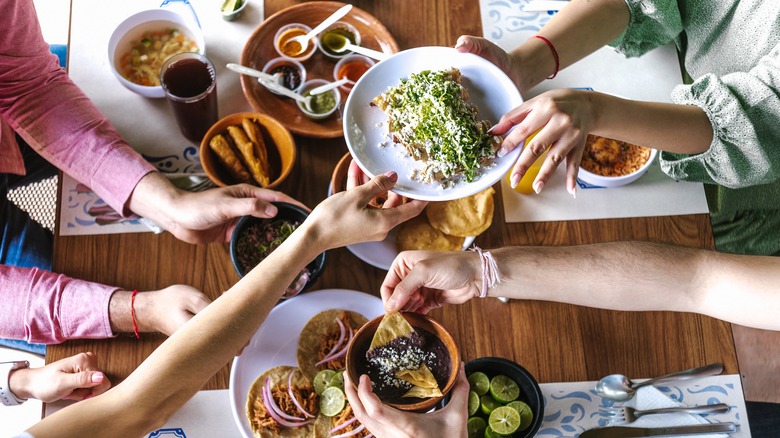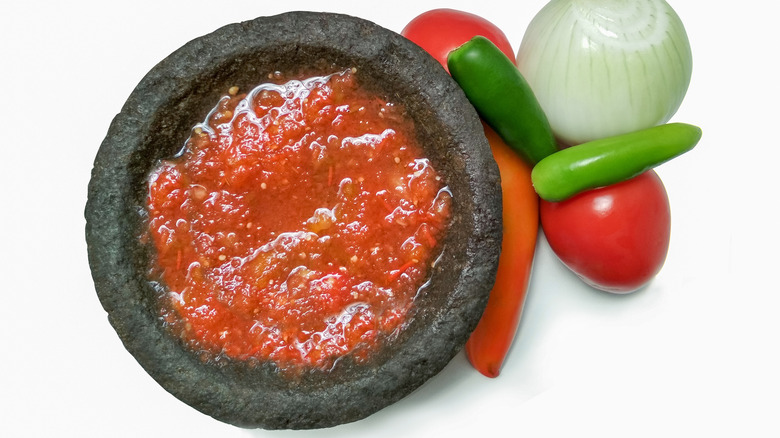What To Consider Before Using Hot Sauce At A Mexican Restaurant
Whether you douse your food with hot sauce or can only handle a few drops, everyone has their go-to condiment for spicing up their favorite foods. If you're a fan of Cholula, Franks RedHot, Sriracha, or Tabasco, you're not alone, as Food & Wine reveals these are the most popular hot sauces in America. And while each of these have varying spice levels, did you know they're part of different hot sauce categories as well? Tabasco and RedHot fall under the Louisiana-style umbrella, according to Taste of Home, which is characterized by thin hot sauces made with chili peppers, salt, and vinegar. And while Sriracha is a category all on its own, Cholula is part of the picante sauces, which lean more Mexican and don't use any vinegar.
Cholula may be one of the most well-known names in picante hot sauce and one of the best grocery store hot sauce brands, but the world of Mexican hot sauces is truly a bottomless (and spicy) pit. Some milder varieties include yellow-label Valentina, jalapeño El Yucateco, and Salsa Búfalo, according to Amigo Foods, but if you're looking for extra heat, try Mayanik Mexican, made with habaneros, or black-label Valentina.
If you don't see any of these recognizable bottles the next time you're dining out at a Mexican restaurant, you may be tempted to try the housemade hot sauce. And while homemade is usually better, you'll want to keep one thing in mind before diving in — the heat.
For homemade hot sauces, the spice level will vary
While it's always a good idea to try authentic, homemade foods, those with a low spice tolerance may want to be careful before sampling the house hot sauce at Mexican restaurants. According to Insider, these condiments can be way spicier than what customers are used to, so at the very least, test a drop on your tongue before dousing it all over your food. Hot sauce recipes can vary from restaurant to restaurant, with the exact spiciness level depending on the peppers used, the food they're meant for, and the preferences of the person making them (via The Spruce Eats).
Eater lists Mexican food, alongside Indian and Korean, as one of the spiciest cuisines in the world, with chiles featured in dishes like chile rellenos and chiles en nogado. And it turns out there's a good reason for all the heat. According to Hot Sauce Hell, warmer climates like Mexico's generally produce spicier food since the heat is thought to slow down higher rates of bacteria growth in these areas.
That's not to say you should shy away from adding hot sauce to your food next time you're trying out a new Mexican restaurant -– just proceed with caution. Try a little taste of the sauce to gauge its spice level before downing your tacos.

